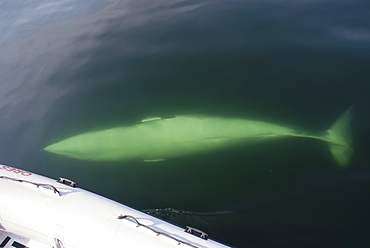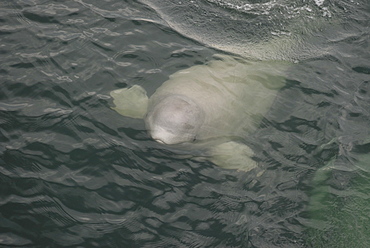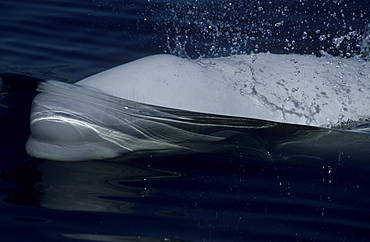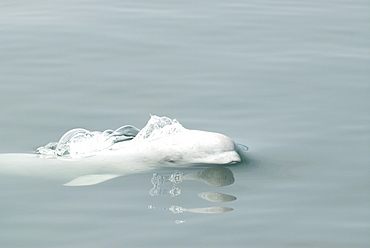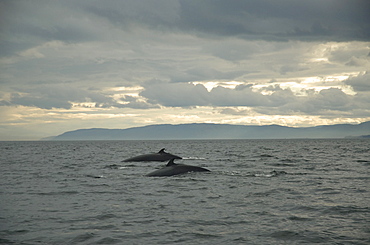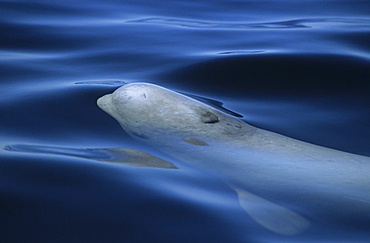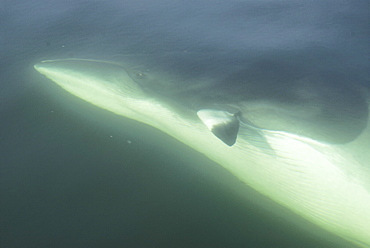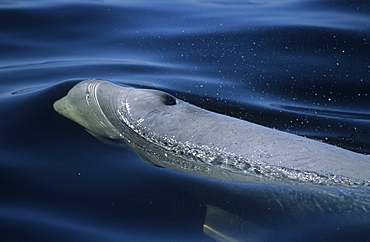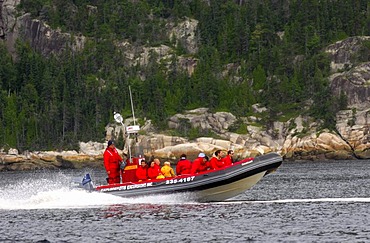Recent searches
Loading...
663-772 - A panoramic view of Craig Goch reservoir, Elan Valley, Cambrian Mountains, Powys, Wales, United Kingdom, Europe
663-775 - London skyline showing Wembley Stadium, London, England, United Kingdom, Europe
663-778 - A panoramic view of Pant Y Llyn Lake, Epynt, Powys, Wales, United Kingdom, Europe
663-774 - Panoramic view, The Epynt, Cambrian Mountains, Powys, Wales, United Kingdom, Europe
663-776 - Panoramic landscape view, Abergwesyn Valley, Powys, Wales, United Kingdom, Europe
663-779 - A panoramic landscape view near Hay Bluff, Powys, Wales, United Kingdom, Europe
663-777 - Woolacombe, Devon, England, United Kingdom, Europe
663-780 - A panoramic view of the Wye Valley near Erwood, Powys, Wales, United Kingdom, Europe
845-824 - The Church of St. Lawrence sits above colourful buildings at Porto Venere, Cinque Terre, UNESCO World Heritage Site, Liguria, Italy, Europe
832-263999 - Steeple of the Cathedral of St. Lawrence, Sveti Lovro, Trogir, Croatia, Europe
832-264000 - Detail, steeple of the Cathedral of St. Lawrence, Sveti Lovro, Trogir, Croatia, Europe
832-256766 - Beach sunset with rosy clouds, Taiwan, Asia
832-252066 - Hotel Tadoussac from 1865 on the mouth of Saguenay Fjord to Saint Lawrence River, Tadoussac, Canada, North America
832-252062 - Tadoussac Chapel also known as Indian Chapel, oldest preserved wooden chapel in Canada from 1747, on the mouth of Saguenay Fjord to Saint Lawrence River, Tadoussac, Canada, North America
832-239214 - The parish church of St. Lawrence on the marketplace of Ahrweiler, Rhineland-Palatinate, Germany, Europe
832-214230 - St Laurentius, St Lawrence church, inner courtyard, former monastery Wedinghausen, city archive, art exhibitions, Arnsberg, Sauerland region, North Rhine-Westphalia, Germany, Europe
832-204430 - St. Lawrence Basilica, Kempten, Allgaeu, Bavaria, Germany, Europe
832-185009 - Bell tower of the Cathedral of St. Lawrence in Trogir, Croatia, Europe
832-184811 - Interior of the Cathedral of St. Lawrence in Trogir, Croatia, Europe
832-185010 - Detail of the Romanesque portal of the Cathedral of St. Lawrence in Trogir, Croatia, Europe
832-184760 - Former Church of St. Lawrence from the 11th Century in Zadar, Croatia, Europe
832-184812 - Detail of the Romanesque portal of the Cathedral of St. Lawrence in Trogir, Croatia, Europe
832-184836 - Cathedral of St. Lawrence in Trogir, Croatia, Europe
832-185012 - Detail of the Romanesque portal of the Cathedral of St. Lawrence in Trogir, Croatia, Europe
832-176483 - Parish Church of St. Lawrence on the Oberen Markt in Thurnau, Franconian Switzerland, Franconia, Bavaria, Germany, Europe
832-176478 - Parish Church of St. Lawrence, Thurnau, Franconian Switzerland, Franconia, Bavaria, Germany, Europe
832-176484 - Wooden bridge used as a roofed passage to the Parish Church of St. Lawrence, Thurnau, Franconian Switzerland, Franconia, Bavaria, Germany, Europe
832-184809 - Cathedral of St. Lawrence in Trogir, Croatia, Europe
990-181 - A group of Finback whales (Balaenoptera physalus) surfaces right beside two whale watching boats. St. Lawrence estuary, Canada
990-126 - The white bodies of a group of Beluga whales (Delphinapterus leucas) breaking the surface of the calm water. These beluga whales that live in the St. Lawrence, Canada, year-round belong to the furthest southerly population of this arctic whale species.
990-166 - Late phase of an oblique lunge. The Minke whale (Balaenoptera acutorostrata) falls back into the water while its throat is still expanded and water is pushed out under high pressure. St. Lawrence estuary, Canada
990-178 - Blue whale (Balaenoptera musculus) exhaling a cloud of tiny water droplets into the air. St. Lawrence estuary, Canada
990-155 - Close up of the blowholes of a Minke whale (Balaenoptera acutorostrata) that lie just posterior of the distinctive ridge stretching over the rostrum. St. Lawrence estuary, Canada
990-148 - Amazing closeup of a lunging Minke whale (Balaenoptera acutorostrata) feeding on krill. Some of these small euphausiids are still hanging on to the expanded grooves. St. Lawrence estuary, Canada
990-146 - She canÃt be more trusting than that. A curious Minke whale (Balaenoptera acutorostrata) has turned upside down exposing her white belly, navel and genital slits to the photographer. St. Lawrence estuary, Canada
990-167 - A perfect oblique lunge of a Minke whale (Balaenoptera acutorostrata) surface feeding in the early evening. Its Grooves are expanded and water is purged out, two main characteristics of a feeding strike. St. Lawrence estuary, Canada
990-139 - The Indian summer colours the tree line along the coast indicating the oncoming winter. A sign that Minke whales (Balaenoptera acutorostrata) should start their migration south to unknown waters. St. Lawrence estuary, Canada
990-131 - A surfacing beluga whale (Delphinapterus leucas). Note the open blowhole, eye, distinctive lips, and pronounced forehed. St. Lawrence estuary, Canada Sequence 3/3.
990-179 - The blueish colouration pattern of Blue whales (Balaenoptera musculus) is used for photo-identification. St. Lawrence estuary, Canada
990-161 - Steering with its pectoral fins the friendly Minke whale (Balaenoptera acutorostrata) turns its streamlined body towards the boat in order to dive under the hull. St. Lawrence estuary, Canada. Sequence 5/6
990-180 - She canÃt be more trusting than that. A curious Minke whale (Balaenoptera acutorostrata) has turned upside down exposing her white belly, navel and genital slits to the photographer. St. Lawrence estuary, Canada
990-128 - Curious Beluga whale (Delphinapterus leucas) surfaces near the boat, its flippers widely spread in order to keep its balance. Note the distinctive lips and the open eye. St. Lawrence estuary, Canada Sequence 2/2.
990-129 - A beluga whale (Delphinapterus leucas) pushing the water up in front of it creating a bow wave similar to ships. St. Lawrence estuary, Canada
990-133 - Just a split second before surfacing, a Beluga whale (Delphinapterus leucas) opens its blowhole to exhale ready to inhale when the blowhole has cleared the water. Beluga whales are an endangered and protected species in the St. Lawrence estuary, Canada
990-164 - Closeup of a the mouth tip of a lunging Minke whale (Balaenoptera acutorostrata). To extract the engulfed fish the whale purges water through a slight opening between its lips. St. Lawrence estuary, Canada
990-177 - Closeup of the expanded grooves of a giant Blue whale (Balaenoptera musculus) during a lateral lunge, a feeding strike occasionally seen in the St. Lawrence estuary, Canada.
990-132 - Just before surfacing a beluga whale (Delphinapterus leucas) exhales while its blowhole is still submerged creating large air bubbles. St. Lawrence estuary, Canada
990-168 - A dense net of blood vessels colour the belly of Minke whales (Balaenoptera acutorostrata) named Picasso pink during high feeding activity. St. Lawrence estuary, Canada
990-159 - The white flipper band of a Minke whale (Balaenoptera acutorostrata) is visible through the greenish water. This distinctive feature is characteristic of Minke whales of the northern hemisphere and the most obvious difference to their relatives in the Antarctic. St. Lawrence estuary, Canada
990-170 - The distinctive colouration pattern of a Minke whale (Balaenoptera acutorostrata). Note that the typical white flipper band extends on to the lower side of the pectoral fin. St. Lawrence estuary, Canada (RR)
990-173 - Tall dorsal fin of a Finback whale (Balaenoptera physalus) which is located far back along the dorsal ridge. This prominent feature is often used for identification. St. Lawrence estuary, Canada
990-160 - Approaching the boat from behind, this Minke whale (Balaenoptera acutorostrata) heaves its head out of the water. St. Lawrence estuary, Canada. Sequence 2/3.
990-127 - Juvenile Beluga whale (Delphinapterus leucas), an endangered and protected species, lifts its head to take a look at the research vessel. Beluga calves are dark in colour and turn white at seven to nine years of age. St. Lawrence estuary, Canada
990-153 - Although largely solitary animals, certain individual Minke whales (Balaenoptera acutorostrata) of the St. Lawrence estuary, Canada, have started to form pairs in recent years. Reasons for this are not yet well understood.
990-162 - A friendly Minke whale (Balaenoptera acutorostrata) has rolled onto its right side to take a better look at the excited people on the boat. Note that the left eye is open. St. Lawrence estuary, Canada
990-150 - ItÃŒs all about being fast and agile when hunting small schooling capelin, the main prey of Minke whales (Balaenoptera acutorostrata) in the St. Lawrence estuary, Canada
990-145 - Very slowly, a curious Minke whale (Balaenoptera acutorostrata) surfaces spreading its pectoral fins perpendicular to its body. St. Lawrence estuary, Canada
990-134 - Only for a few seconds the blowhole of a surfacing beluga whale (Delphinapterus leucas) is exposed and free of water. St. Lawrence estuary, Canada Sequence 1/3.
990-147 - The purging water almost reaches the photographers camera. Closeup of an oblique lunge of a surface feeding Minke whale (Balaenoptera acutorostrata). St. Lawrence estuary, Canada
990-142 - Minke whale (Balaenoptera acutorostrata) swimming into a path of light created on the watervs surface by the setting sun. St. Lawrence estuary, Canada. Sequence 1/2.
990-171 - Tiny water droplets catch the last light of the setting sun as this Finback whale (Balaenoptera physalus) exhales blasting the air compressed in its huge lungs high into the air. St. Lawrence estuary, Canada
990-136 - The female Humpback whale (Megaptera novaeangliae) named Tic-Tac-Toe, a regular visitor to the area, breaches close to the research vessel. Out of joy, to fool around, or simply to impress people or her companion Siam? St. Lawrence estuary, Canada Sequence 2/3.
990-124 - Harbour porpoise (Phocoena phocoena) arching its back to dive just as its giant relatives do. However, these small cetaceans donÃŒt dive as deep. St. Lawrence estuary, Canada (RR)
990-137 - Fluking Humpbac whale (Megaptera novaeangliae) showing its wide tail stock with the powerful muscles leading to its flukes. St. Lawrence estuary, Canada
990-144 - Surfacing sequence of a Minke whale (Balaenoptera acutorostrata) which is following the research vessel. Such friendly whales are most often curious juveniles which love to take a break from their main activity, feeding. St. Lawrence estuary, Canada Sequence 3/6.
990-138 - The Humpback whales (Megaptera novaeangliae) named Tic-Tac-Toe and Siam diving in close proximity to kayakers who will certainly always remember this very special encounter with these giants. The absence of an engine might make it difficult for whales to perceive kayakers. St. Lawrence estuary, Canada
990-156 - What is more beautiful? The harmonically formed tip of the Minke whaleÃŒs (Balaenoptera acutorostrata) snout or the water bubble along its lips? St. Lawrence estuary, Canada
1126-427 - Lawrence Durrell's House in Bellapais, North Cyprus, Cyprus, Europe
990-140 - Minke whale (Balaenoptera acutorostrata) surfacing in the green coloured water. Although exposed, she still has both blowholes tightly closed. Note the pronounced ridge on the rostrum, a main feature of rorqual whales. St. Lawrence estuary, Canada Sequence 1/2.
990-125 - Very rare photograph of a curious Harbour porpoise (Phocoena phocoena) visiting the research vessel. St. Lawrence estuary, Canada (RR)
990-163 - She canÃŒt be more trusting than that. A curious Minke whale (Balaenoptera acutorostrata) has turned upside down exposing her white belly, navel and genital slits to the photographer. St. Lawrence estuary, Canada
990-141 - A beautiful and powerful cloud formation above the surfacing Minke whales (Balaenoptera acutorostrata). St. Lawrence estuary, Canada
990-165 - Oblique lunge of a Minke whale (Balaenoptera acutorostrata) named Crowsfoot who has performed all feeding manoeuvre types known from the St. Lawrence estuary, Canada
990-152 - Two Minke whales (Balaenoptera acutorostrata) surfacing as a pair. Whales migrating to the St. Lawrence estuary, Canada, have to share their summer feeding ground with numerous freighters along the international seaway which connects Quebec City with the Atlantic ocean.
990-172 - Finback whale (Balaenoptera physalus) arching its back in order to dive showing its tall dorsal fin and patches of green algae that cover its back. St. Lawrence estuary, Canada
990-143 - Friendly Minke whale (Balaenoptera acutorostrata) surfacing laterally and curiously approaching the research vessel. St. Lawrence estuary, Canada
990-169 - Like a piece of art thousands of waterdrops cover the expanded belly of a Minke whale (Balaenoptera acutorostrata) performing a ventral arc. St. Lawrence estuary, Canada
990-130 - A surfacing beluga whale (Delphinapterus leucas). Note the open blowhole, eye, distinctive lips, and pronounced forehed. St. Lawrence estuary, Canada Sequence 2/3.
990-135 - The Humpback whale (Megaptera novaeangliae) named Tic-Tac-Toe leaps out of the water right beside the research boat taking a close look at the photographer. St. Lawrence estuary, Canada
990-154 - Unusual scratches and impermanent patches on the skin of a Minke whale (Balaenoptera acutorostrata) known as Otter who was first identified in the St. Lawrence estuary, Canada, in 1996.
990-157 - The pointy snout of a surfacing Minke whale (Balaenoptera acutorostrata) keeping its blowholes tightly closed until the moment they break the surface. St. Lawrence estuary, Canada
990-176 - The impressive tail stock of this Blue whale (Balaenoptera musculus) carries huge muscle bands which lead to the horizontal flukes. St. Lawrence estuary, Canada
990-149 - Closeup of a Minke whale (Balaenoptera acutorostrata) showing the beautiful pattern of parallel grooves near the tip of the snout. St. Lawrence estuary, Canada
990-158 - Even in conditions with little visibility, the white flipper band of a Minke whale (Balaenoptera acutorostrata) shines through the water of the St. Lawrence estuary, Canada
990-151 - The result of a strong head slap of a Minke whale (Balaenoptera acutorostrata). Such a splash supposedly scares shoaling fish that are known to cluster when threatened. St. Lawrence estuary, Canada
990-175 - Finback whale (Balaenoptera physalus) might be seen alone or in pairs but often form groups of more than a dozen animals in order to hunt fish. St. Lawrence estuary, Canada (RR)
832-162042 - Tourists in a Zodiac inflatable boat of the Otis Excursions Inc. company, excursion on the St. Lawrence River, Tadoussac, Canada
832-162029 - Tourists in red protective suits in an inflatable Zodiac boat, of the brand Otis Excursions Inc., whale-watching on St. Lawrence River, Tadoussac, Canada
1109-665 - Loggia and St. Lawrence Square viewed from the Cathedral of St. Lawrence, Trogir, UNESCO World Heritage Site, Dalmatian Coast, Croatia, Europe
1109-505 - Fort Lovrijenac (St. Lawrence Fortress) and the coastline from the Old City Walls, Dubrovnik, Dalmatian Coast, Adriatic, Croatia, Europe
832-154284 - View towards Chateau Frontenac, the harbour and the St. Lawrence River, Quebec City, Quebec, Canada
832-154282 - Historic town centre of Quebec City with the harbour and the St. Lawrence River, Quebec City, Quebec, Canada
832-154285 - View towards Chateau Frontenac, the harbour and the St. Lawrence River, Quebec City, Quebec, Canada
832-146774 - Toya Lake in early morning, Hokkaido, Japan, Asia
832-145648 - St. Lawrence healing a blind man, detail from the Heiligentaler altar, St. Nicolai church, Lueneburg, Lower Saxony, Germany, Europe
832-126150 - Image of Lawrence of Arabia engraved in a mountain, desert, Wadi Rum, Jordan, Western Asia
832-127468 - Nuertingen am Neckar, Neckar river with Stadtkirche Saint Laurentius, town church of St Lawrence, Baden-Wuerttemberg, Germany, Europe
832-127469 - Nuertingen am Neckar, Neckar river, with Stadtkirche Saint Laurentius, town church of St Lawrence, Baden-Wuerttemberg, Germany, Europe
832-127467 - Nuertingen am Neckar, Neckar river with Stadtkirche Saint Laurentius, town church of St Lawrence, Baden-Wuerttemberg, Germany, Europe


































